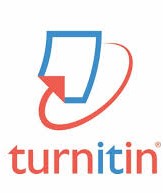Model Of Tourism Destination Development Tegal Case Study, Central Java
Abstract
ABSTRACT
The propose of this study is to produce the model that can be applied in Tegal area especially, for making Tegal city as a tourist destination choice by paying attention to the components that influence the development of this tourist destination, especially in Tegal Region, Central Java. If this model is applied, it's not only useful for tourist attraction in Tegal, Central Java, but also will have an impact for increasing the local revenue from tourist expenditure.
Based on the results of the research that the Sig. (2-tailed) shows (0.000) <0.05. it can be interpreted that H0 is rejected and H1 is accepted. This means that in 0 of these studies, there is a significant relationship between the variables of tourism development (X) with tourism destination variables (Y) in Guci Hot Springs, Pantai Alam Indah (PAI), and Guciku Hot water boom.
The tourism development model can focus on implementing green tourism, increasing promotional activities, and must involve many sectors (Multi-sector) because it requires cooperation from various parties such as the central and regional governments, the private sector, tourism managers, local communities and tourism associations.
This study will use Purposive Sampling data collection techniques, and the respondents are visitors to tourist destinations in Tegal, Central Java. The method that will be used to find out aspects of tourism destination development is carried out through statistical calculations, then an analysis of tourist attraction development is carried out using SWOT analysis techniques.
Keywords: Tourism development, tourism destination
References
DAFTAR PUSTAKA
Bahri,Syamsul dan Fahkry Zamzam. 2014. Model Penelitian Kuantitatif Berbasis SEM-Amos. Deepublish. Yogyakarta
Baroroh, Ali. 2008. Trik-Trik Analisis Statistik dengan SPSS 15. Jakarta. PT Elex Media Komputindo
Budi, Sadar Pakarti. 2015. Model Struktural Pengembangan Daya Saing Destinasi Wisata Studi Kasus Kota Jakarta. ISSN 2407-9189. University Research Colloquium 2015
Gunn, clare A & turgut var. Tourism Planing. Fourth Edition. Newyork By Routledge : 2002
Hamdi, Asep Saepul dan E Bahruddin. 2014. Metode Penelitian Kuantitatif Aplikasi dalam Pendidikan. Deepublish:Yogyakarta
Hall Collin Michael & John M Jenkins. Tourism and Public Policy. London: Thomson Learning. 1995
Hidayat, Marceilla. 2011. Strategi Perencanaan dan Pengembangan Objek Wisata (Studi Kasus Pantai Pangandaran Kabupaten Ciamis Jawa Barat). Tourism and Hospitality Essentials (THE)Vol.I,No.1,2011-33-43
Inskeep, Edward. 1991. Tourism planning. an integrated and sustainable development approach. John Wiley & Sons,Inc. Canada
John, Swarbrooke. The Development and Management of Visitor Attractions. Second Edition. Oxford : Butterworth-Heinemann. 2002
Noor , Juliansyah. Metodologi penelitian : Skripsi, Thesis, Disertasi, dan Karya Ilmiah., Edisi pertama. Jakarta: Prenada Media. 2011
Satria, Dias. 2009. Strategi Pengembangan Ekowisata Berbasis Ekonomi Lokal Dalam Rangka Program Pengentasan Kemiskinan di Wilayah Kabupaten Malang. Journal Of Indonesia Applied Economics. Vol.3 No. 1 Mei 2009, 37-47
Simanjuntak, Bungaran Antonius dan Soedjito Sosrodiharjo.2014 Metode Penelitian Sosial (Edisi Revisi). Jakarta: Yayasan Pustaka Obor Indonesia
Sugiyono.2016. Metode Penelitian Kuantitatif, Kualitatif san R&D. Alfabeta. Bandung
Sugiyono. 2009. Metode Penelitian Kuantitatif Kualitatif dan R&D. Bandung. Alfabeta.
Yoeti, Oka A. 2016. Perencaan dan Pengembangan Pariwisata. Jakarta : Balai Pustaka
DOI: http://dx.doi.org/10.30813/jhp.v5i1.1518
Refbacks
- There are currently no refbacks.
.png)




